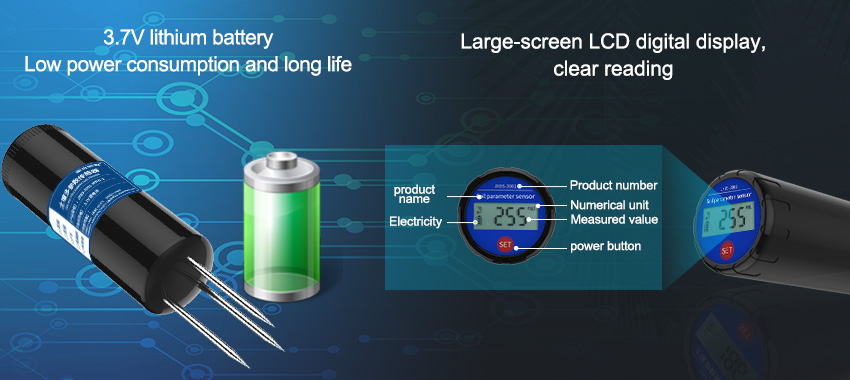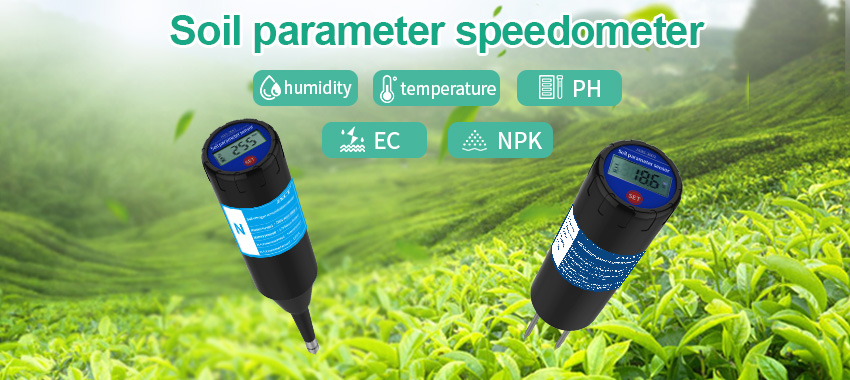Agriculture is undergoing a remarkable transformation thanks to advancements in technology. Among the numerous innovations, soil sensor technology has emerged as a game-changer in optimizing crop production. Soil sensors provide real-time data on various soil parameters, enabling farmers to make informed decisions about irrigation, fertilization, and overall crop health. In this article, we will explore the role of soil sensor technology in revolutionizing agriculture, discussing its applications, benefits, and future prospects.
Precision Irrigation:
Water scarcity is a significant challenge in agriculture, making efficient water management crucial. Soil sensors equipped with moisture probes allow farmers to precisely monitor soil moisture levels. By collecting data on soil moisture content, these sensors help determine the optimal timing and amount of irrigation required for crops. This precision irrigation approach eliminates the guesswork and avoids over or under-watering, ensuring that plants receive the right amount of water at the right time. As a result, water-use efficiency is maximized, water resources are conserved, and crop yields are enhanced.

Nutrient Management:
Proper nutrient management is essential for achieving optimal crop growth and minimizing environmental impacts. Soil sensors equipped with nutrient probes provide accurate measurements of essential elements such as nitrogen, phosphorus, and potassium in the soil. With this information, farmers can tailor fertilization practices to meet the specific needs of their crops. By avoiding over-application or under-application of nutrients, soil sensors optimize nutrient uptake, reduce fertilizer waste, and minimize nutrient runoff into water bodies. This precision nutrient management enhances crop health, improves productivity, and protects the environment.
pH Monitoring:
Soil pH plays a critical role in nutrient availability and microbial activity. Soil sensors equipped with pH probes allow farmers to monitor soil acidity or alkalinity levels accurately. By regularly measuring and monitoring soil pH, farmers can make informed decisions about pH adjustments to create optimal growing conditions for different crops. Maintaining the appropriate pH range promotes nutrient uptake, microbial activity, and overall soil health. By optimizing soil pH, farmers can maximize crop yields and minimize the need for chemical interventions.
Disease and Pest Management:
Early detection of diseases and pests is vital for effective management. Soil sensors can detect changes in soil conditions that are indicative of disease or pest infestations. By monitoring soil temperature, moisture, and conductivity, these sensors can alert farmers to potential threats. Real-time data from soil sensors enables timely intervention, preventing the spread of diseases and minimizing crop damage caused by pests. By enabling proactive disease and pest management, soil sensors contribute to higher crop yields and reduced reliance on pesticides.

Data-Driven Decision Making:
The integration of soil sensor technology with data analytics offers tremendous potential for data-driven decision making in agriculture. By collecting and analyzing data from soil sensors, farmers can gain valuable insights into their fields' unique characteristics and make informed choices. Data analytics platforms can process large amounts of data, providing actionable recommendations for optimizing crop production. By leveraging this technology, farmers can implement precision farming techniques, adapt their practices to changing environmental conditions, and maximize resource efficiency.
Sustainability and Environmental Impact:
Soil sensor technology plays a vital role in improving sustainability and reducing the environmental impact of agriculture. By optimizing irrigation practices, nutrient management, and pest control, soil sensors minimize water usage, reduce fertilizer runoff, and decrease pesticide applications. This leads to improved water quality, reduced pollution, and enhanced ecosystem health. Additionally, precise data from soil sensors enable farmers to implement conservation practices such as cover cropping and rotational grazing, further enhancing sustainability in agriculture.
Future Prospects and Conclusion:
The future of agriculture lies in the continued advancement and integration of soil sensor technology with other emerging technologies. The combination of soil sensors with remote sensing, satellite imagery, and artificial intelligence holds immense potential for precision agriculture. This integration will enable farmers to gather real-time data on a larger scale and make informed decisions at the individual plant or field level. Moreover, advancements in wireless connectivity and data transmission will enhance the efficiency and effectiveness of soil sensors, making them more accessible and user-friendly for farmers.
In conclusion, soil sensor technology is revolutionizing agriculture by providing real-time data on soil conditions and enabling data-driven decision making. Precision irrigation, nutrient management, disease and pest control, and sustainability are all greatly enhanced through the use of soil sensors. As technology continues to evolve, soil sensor systems will become more sophisticated, affordable, and widespread. By harnessing the power of soil sensor technology, farmers can optimize crop production, increase efficiency, and contribute to a more sustainable and resilient future for agriculture.







